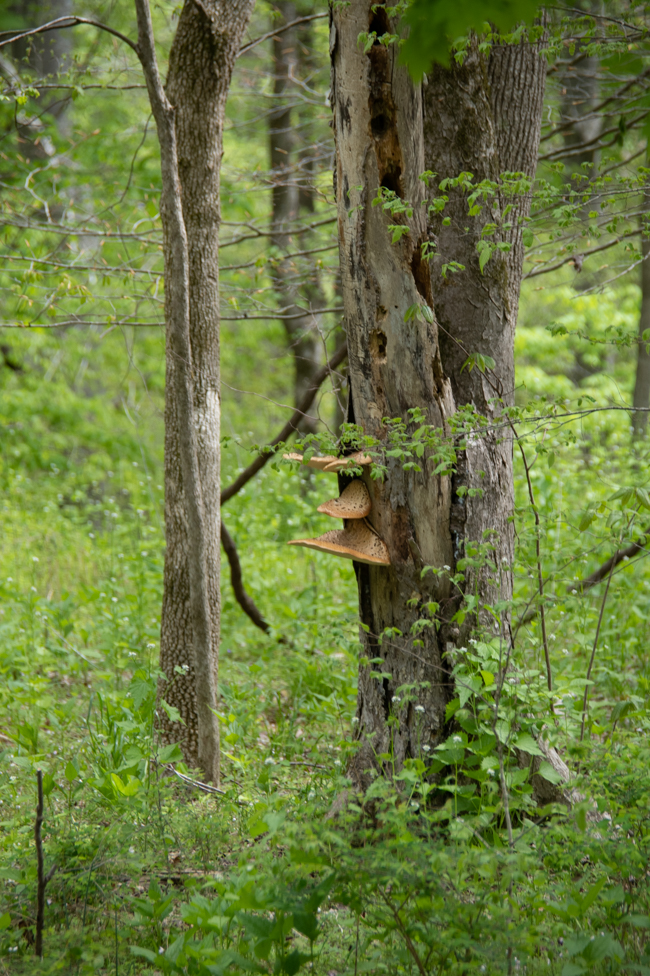The trip to Kentucky was to visit Mammoth Caves National Park. The park has limited their tours due to COVID, and while we were prepared to be disappointed, we were not.
The morning began with a trip to the cemetery, a must for this tophophile. It is the best way to also understand Mammoth Caves.
Mammoth Caves is a 142 mile labyrinth of limestone passageways. They are stacked atop each other on five levels. It is the longest cave system in the world, and much has never been explored. The area is a Unesco World Heritage Site.
In 1838, 17 year old Stephen Bishop was brought to the cave as a slave by his owner who planned to turn the caves into a tourist attraction.
Bishop, using a lard lamp and ropes, was said to have traveled most every inch of the caves. It is hard to imagine the danger that he placed himself in exploring the caves by a flickering light, through underground rivers, rubble, and sinkholes, to name just a few of the obstacles.
In 1842 a map of the caves, drawn by Bishop, was published in Rambles in the Mammoth Cave, During the Year 1844.
In that same year Bishop met Charlotte, they wed and she lived with him in the slave quarters.
Eventually Bishop’s slave owner died, and stipulated in his will that in seven years Bishop was to be Emancipate. Bishop enjoyed only one year of emancipation, he died at the age of 37.
Bishop was buried in an unmarked grave in front of Mammoth Cave. In 1878, businessman James Mellon told Charlotte that he would send her a headstone. It took three years to arrive. It was an unclaimed Civil War headstone, and the original name was scratched out. The date of death was wrong by two years. Hardly a gracious gift.
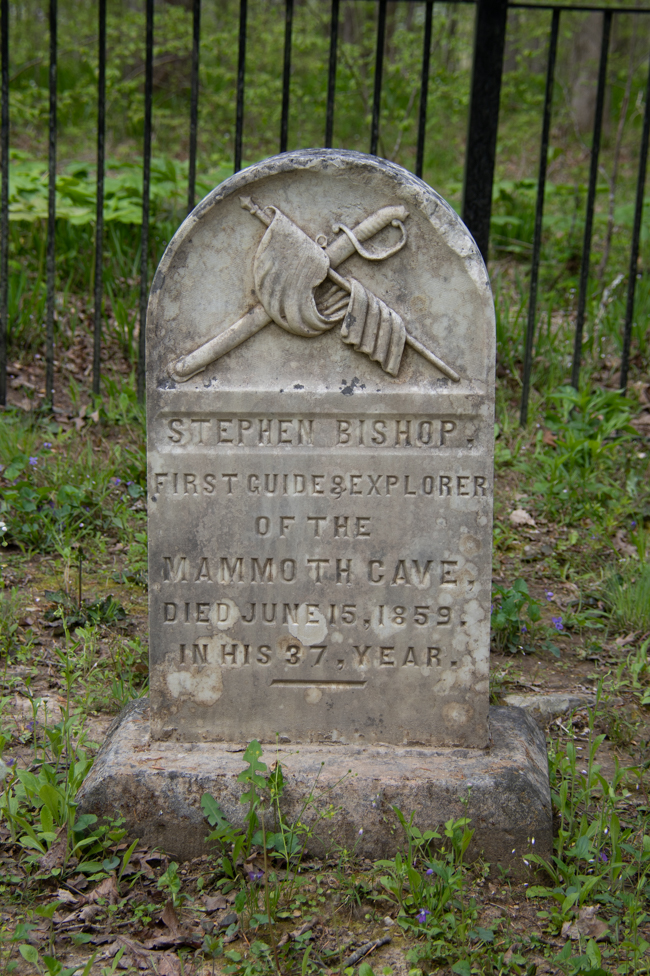 The cemetery holds the remains of other slaves that worked as guides and as staff in the hotel built by Bishops owner.
The cemetery holds the remains of other slaves that worked as guides and as staff in the hotel built by Bishops owner.
There is archeological evidence that Native Americans explored the first three levels of the cave between 2,000 and 4,000 years ago.
There is no written history of the cave until its re-discovery in the 1790s. It came to prominence during the War of 1812 when slave laborers mined the caves for potassium nitrate. These nitrates (saltpeter) were removed via a rather elaborate process and then shipped to the Dupont factory in Delaware to be made into gun powder.
Tours began in 1816. Tours have been given continuously for the last 86 years, until COVID. During COVID, you are able to descend into the first layer of the cave on a self guided tour, getting a feel for the caves, seeing the remains of the saltpeter operation, and a failed tuberculosis clinic.
The history of Mammoth Caves is fascinating, from the Native Americans, through slavery in the park and then the building of the park as we know it today by the CCC.
Getting on the road
I am traveling with a quilter, so we could not pass up the opportunity to see the National Quilt Museum in Paducah, Kentucky. While I admire the workmanship of a quilter I was stunned to see the high art of quilting.
Titled Bang You’re Dead, this quilt by Jacquie Gering was done in 2013. To quote the explanation: …made in response to my husband’s work in the Chicago Public Schools. Every morning he would receive the Overnight Violence Report, a list of students hurt or killed that day who were students in the district. After learning more about the violence affecting children and adults in the city, I made this piece to call attention to the problem of gun violence. Chicago has a reputation for being an extremely violent city. After researching the data on gun violence across America, I discovered that my new home in Kansas City has a higher per capita gun death rate. It’s a problem across this country and in every city and town in America. If we don’t recognize or talk about the problem, we can’t find a solution. This quilt was made to spark that conversation.
By Karen Maple with her explanation: The United States incarcerates 3 ½ times the number of people per population than European countries. African-Americans and Hispanics have much higher imprisonment rates than whites in the US. Regardless of color or economic background, many prisoners are forgotten by society. How would you spend your years in prison in orange garb?
Here are a few more pictures of Mammoth Caves National Park
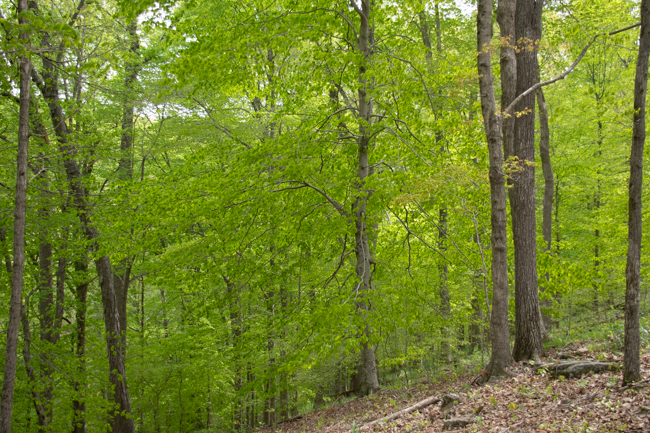
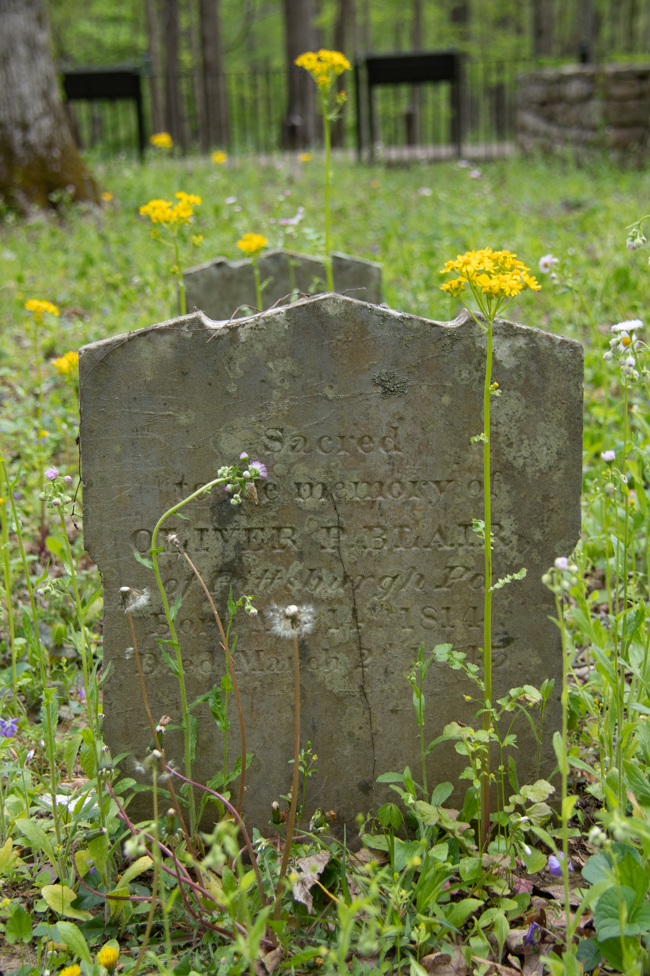
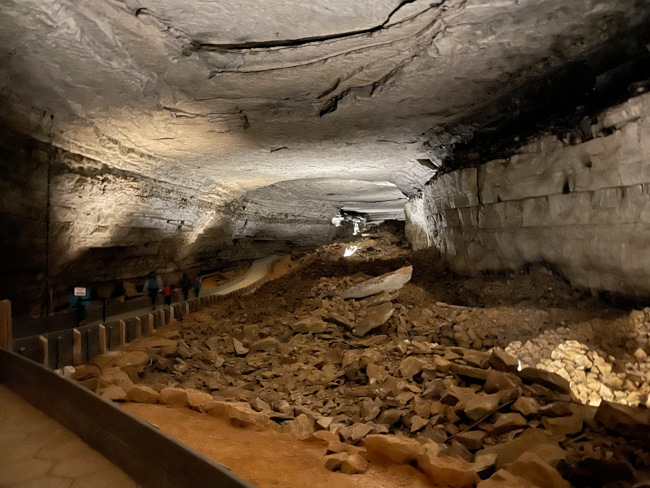
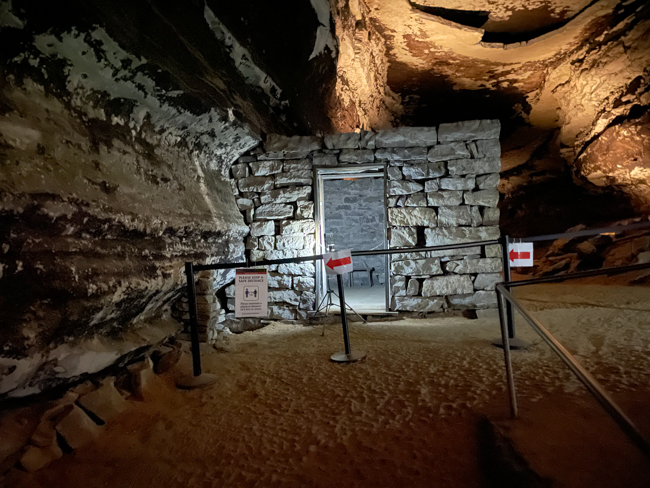
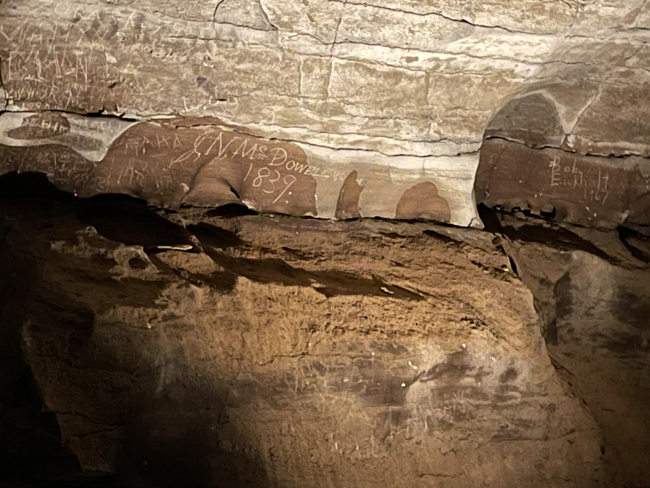
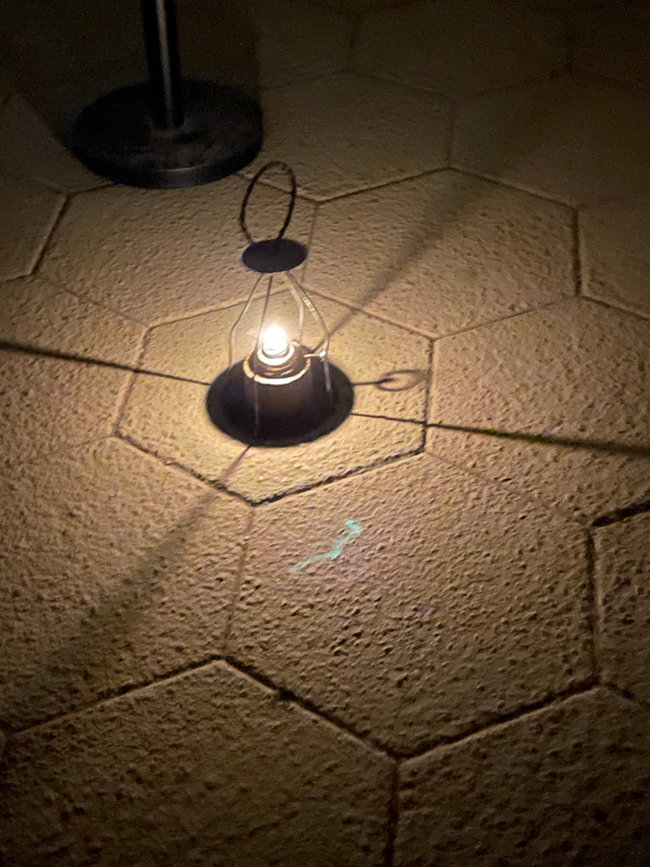
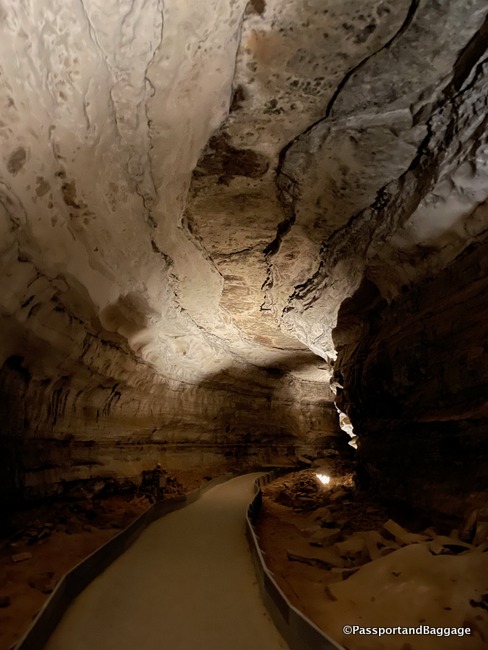
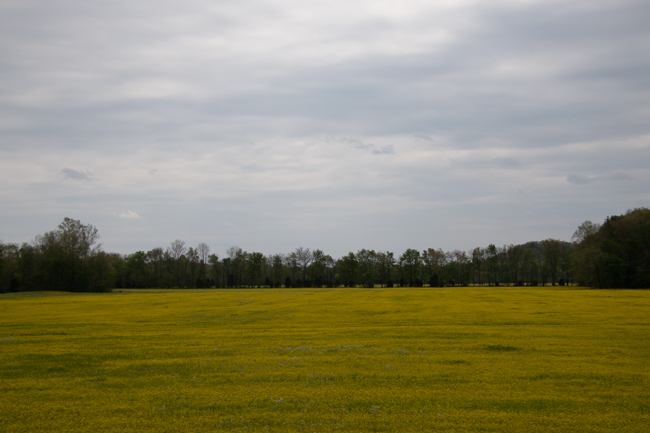
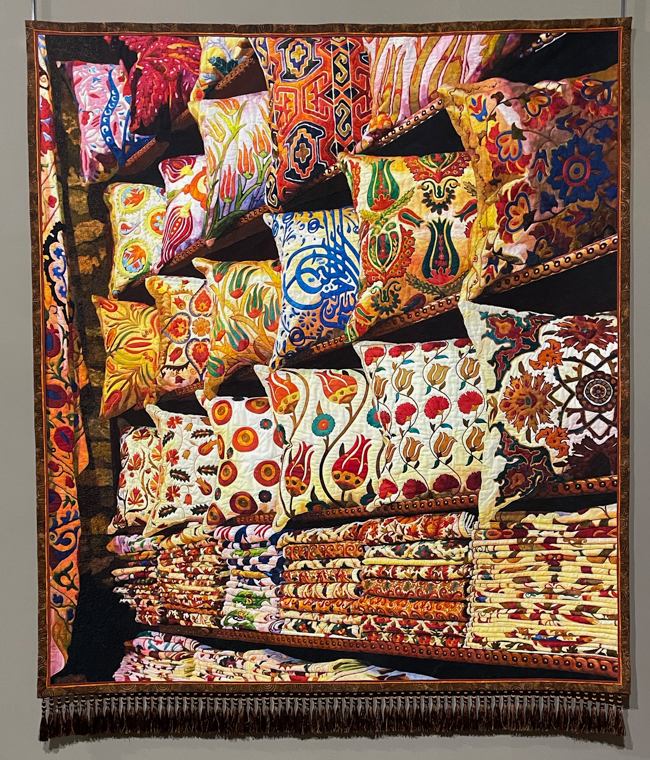

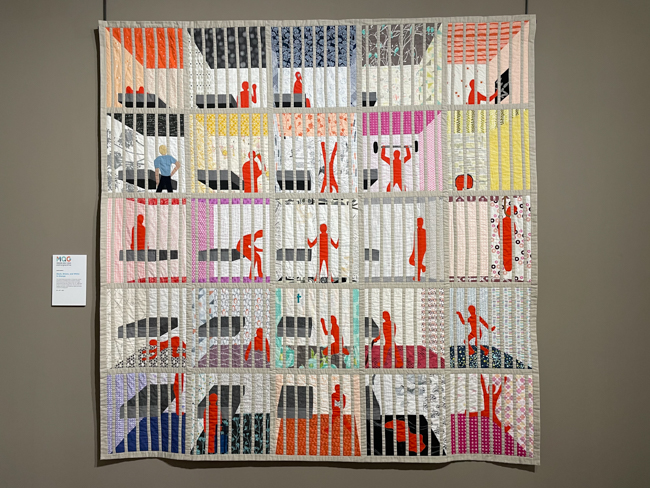
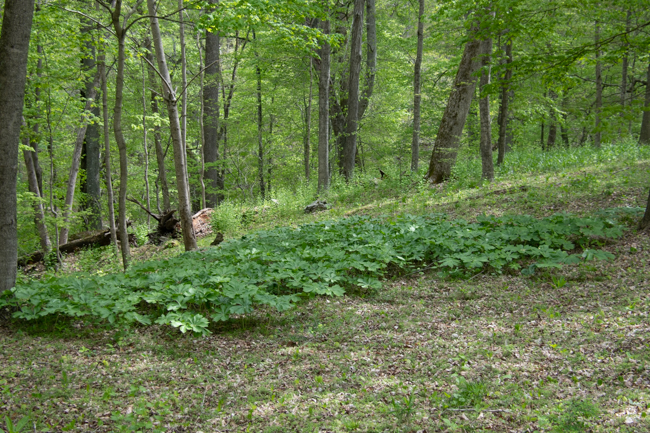
 *
*